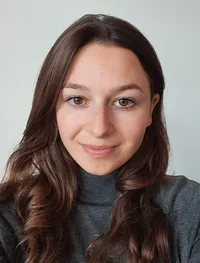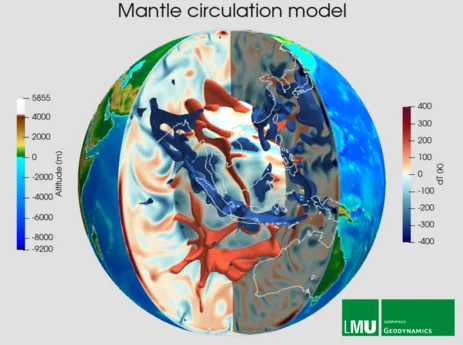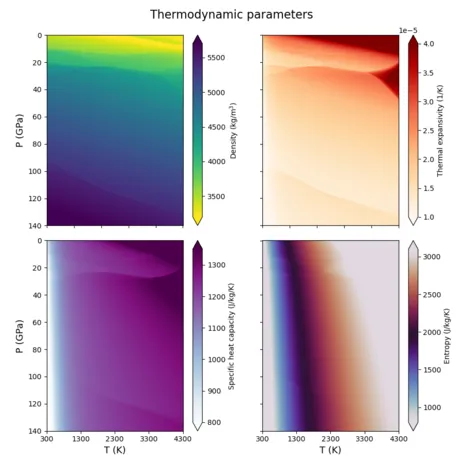


P5: Linking of seismic tomography models and geodynamic Earth models

Project leader
Isabel Papanagnou
Supervisors
Prof. Heiner Igel, Prof. Hans-Peter Bunge
Advisors (int.)
Dr. Bernhard Schuberth (LMU)
Advisors (ext.)
Prof. Andreas Fichtner (ETHZ), Dr. habil. Christophe Zaroli (Univ. Strasbourg)
Description
This project links mantle state estimates derived from seismic tomography to flow inducing geodynamic heterogeneity structure. We will investigate the effects of mantle mineralogy and limited tomographic resolution on the relation between thermal and seismic mantle structure in geodynamic models. Important questions involve tomographic filtering effects; that is, seismic tomography provides us only with a low-pass version of the true Earth structure. Additional complexity arises from the fact that tomographic models of Earth’s mantle represent 3-D variations in seismic velocity, while geodynamic models require estimates of its present-day thermodynamic state in terms of buoyancy variations (i.e., density). Mineralogical models can be used to convert the seismic velocity information to density (and vice versa) if effects such as anelasticity and phase transitions are considered. New opportunities arise, because the focus in seismic tomography is shifting from merely increasing the resolution towards additionally providing formal means to quantify image resolution and model uncertainty. Probabilistic inversions based on Bayesian inference on the one hand and the SOLA Backus–Gilbert tomographic scheme on the other hand are promising The latter does not only provide information on resolution and model uncertainty, but can also be applied to large inverse problems on the global scale.
Main objectives
- Exploring the effects of tomographic filtering on estimates of the thermodynamic state of the mantle
- Investigating ways how to treat the inevitable difference in characteristic length scales between global whole mantle seismic tomography and geodynamic forward models
- Investigating anelastic effects on the mineralogical mapping and on the seismic signature of mantle convection models
- Exploring the effects of uncertainties in seismic tomography and mantle mineralogy on geodynamic inverse simulations
- Provision of an representative ensemble of thermodynamic state estimates of the mantle for the geodynamic inverse simulations
RTG coupling
Input:
- Mineralogy (conversion between material parameters, i.e. seismic velocities, density, temperature) (external)
- Forward uncertainty estimates for the material parameters from P9.
Output:
- Geodynamic mantle heterogeneity structure for P2, P6, P8 and P9 to link togeodynamic retrodictions and their uncertainty.
- Visualization of geodynamic heterogeneity (P10).
Background/motivation and preliminary results
I aim at a better understanding of deep Earth processes that drive both vertical and horizontal surface motions by co-developing sophisticated numerical methods for computing 3-D high resolution mantle circulation models (MCMs, Figure 1) and constraining their validity, inherent assumptions and input data using a range of seismic observations and seismic data based models, including seismic tomography. In this, thermodynamic models of mantle mineralogy play an important role, as they provide information on characteristic thermo-elastic parameters throughout Earth's mantle (Figure 2), such as thermal expansivity, specific heat capacity, density, bulk and shear modulus and thus also seismic velocities. On the one hand, they allow us to inform our MCMs about the response of the mantle material to changing temperature and pressure conditions at runtime and thus, for instance, account for dynamic effects of mineral phase transitions on mantle flow. On the other hand, this allows us to link the final, present day state of our MCMs to seismic observations, by predicting synthetic seismic structure for the computed temperature field. The resulting seismic models can be post-processed and used for the quantitative assessment and validation of the respectively underlying MCM against observations.
Publications
Papanagnou et al., 2022 (Geodynamic predictions of seismic structure and discontinuity topography of the mantle transition zone)
Robl et al., submitted (From seismic models to mantle temperatures: Uncertainties related to mineralogical complexities and limited tomographic resolution)
Papanagnou et al., in prep. (Imprints of mineralogical thermodynamics on mantle flow and its seismic signature)
D'Ascoli et al., in prep. (Terra Neo: A next generation high resolution global mantle convection code)
Presentations
EGU 2022
SEDI 2022
Deep Earth Mini Symposium 2022
EGU 2023
EGU 2024
(+UPLIFT Retreat 1-3)

